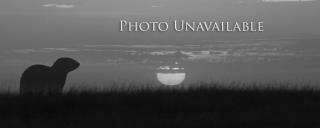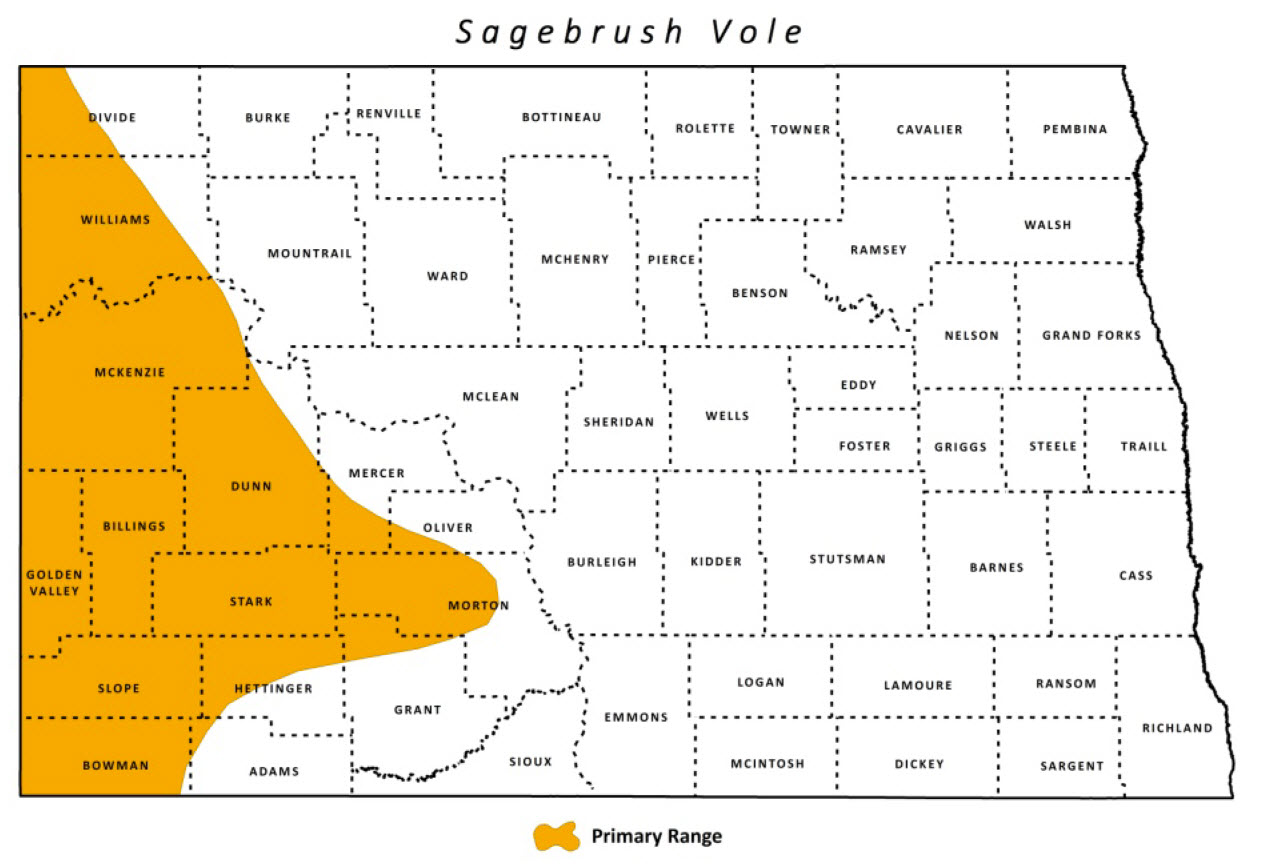
Sagebrush Vole
| Scientific Name | Lemmiscus curtatus |
|---|---|
| General Description | This rodent has a gray, bushy coat, small rounded ears and a very short tail. Unlike other voles it is usually found living in small colonies consisting of shallow burrows. |
| Status | Year-round resident. |
| Abundance | Rare. |
| Primary Habitat | Semi-arid areas with loose soil; usually a combination of grass and sagebrush. |
| Federal Status | No federal status. |
| Reason for Designation | Sagebrush habitat this species inhabits is threatened by conversion and other land use practices. |
Locations and Conditions of Key Habitat
Preferred Habitat
Found in semi-arid lands. Soil normally loose and well drained. Vegetation is normally sagebrush or rabbit brush with a grass component.
Key Areas and Conditions for Sagebrush Vole in North Dakota
Sagebrush Voles are found in southwestern North Dakota. Sagebrush habitat in that portion of the state would be a key area identified for this species.
Problems Which May Affect this Species
Habitat
The health of North Dakota sagebrush habitat is the greatest concern for this species. Much of the states sagebrush habitat has been disturbed and is in poor condition.
Other Natural or Manmade Factors
No other threats have yet been identified for this species.
Research and Survey Efforts
Current Research or Surveys
- Northeastern State University is currently surveying “fringe” mammals in southwestern ND of which the Sagebrush Vole is included.
Previous Research or Surveys
- Northern Prairie Wildlife Research Center developed an annotated bibliography for mammals of North Dakota.
- University of North Dakota studied Climate Change and Land use Effects on Small Mammal Communities in a Northern Great Plans Landscape.
- Dickinson State University surveyed small mammals in western North Dakota as part of a Black-tailed Prairie Dog survey.
- A number of agencies have surveyed for small mammals in the southwestern part of the state, including REAP, Theodore Roosevelt National Park, the U.S. Forest Service, and U.S. Bureau of Land Management.
Additional Research or Surveys Needed
- Research and survey efforts are needed to identify target areas and possible threats for this species.
- Develop a monitoring protocol for small mammals.
Management Recommendations
- Work with partners to implement easements or land acquisition.
- Communicate with the oil industry to minimize impacts to sagebrush habitats.
- Implement restoration projects where possible.
- Implement grazing systems to benefit shortgrass prairie residual cover, forb species, and woody draws (i.e. participate in revision of USFS Allotment Management Plans or AMP’s).
- Control noxious weeds through biological and chemical methods.
- Coordinate with wind energy companies to minimize impacts.
- Look to exchange and consolidate mineral rights, particularly within focus areas.
- Continue to provide public land management agencies with mitigation recommendations in respect to species of concern.
- Survey areas of data gaps. Conduct research/surveys to establish baseline information on sage brush voles.
Monitoring Plans
No monitoring plan for this species has been developed.
2005-2015 Progress
The Sagebrush Vole maintains a level III Species of Conservation Priority ranking. Little is still known of this species. A current study T-39-R-1 Survey of ‘fringe’ mammals in western North Dakota hopes to provide much needed information on this species.

Note: A listing of works consulted when compiling the information on this page may be found in the 2015 State Wildlife Action Plan.
